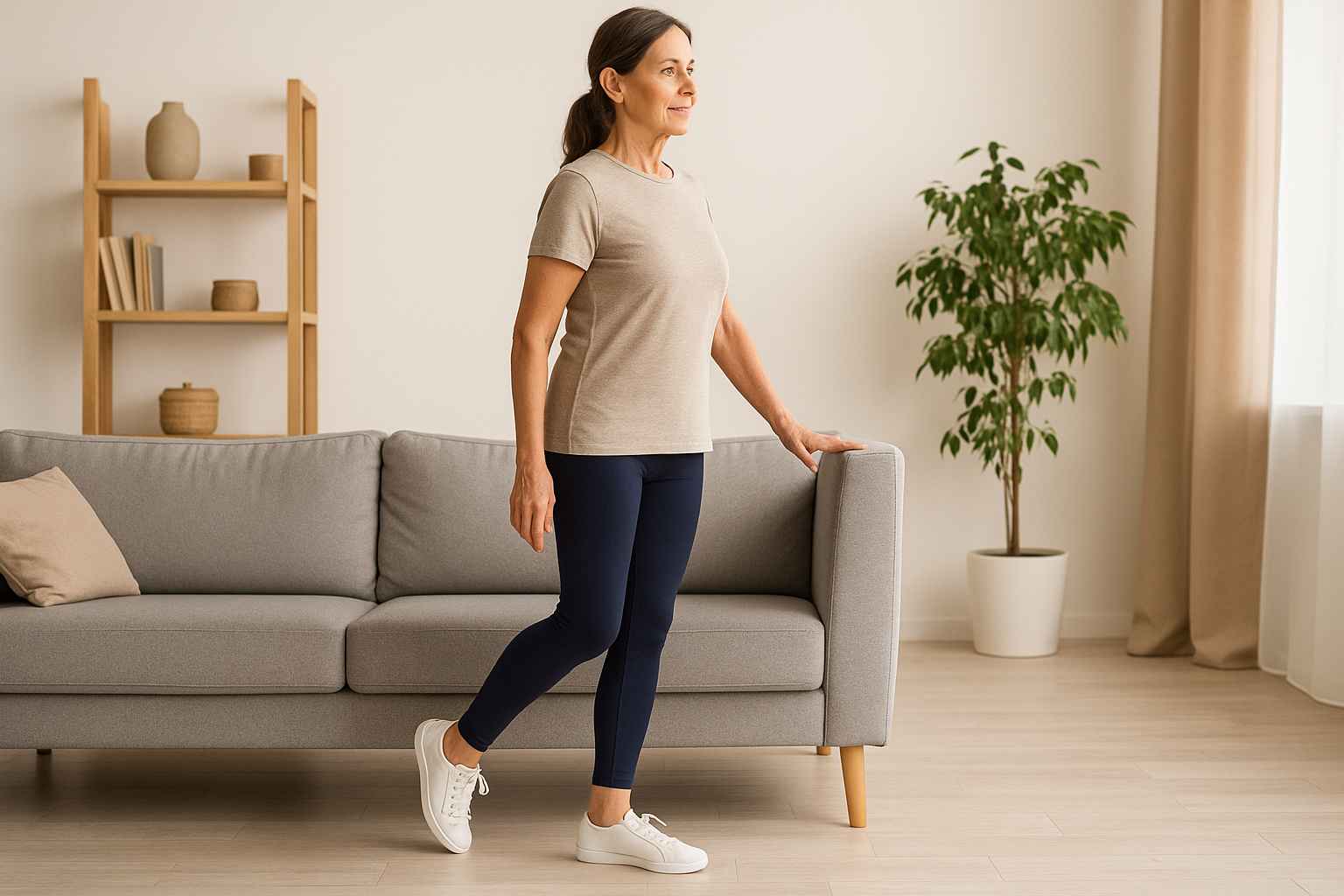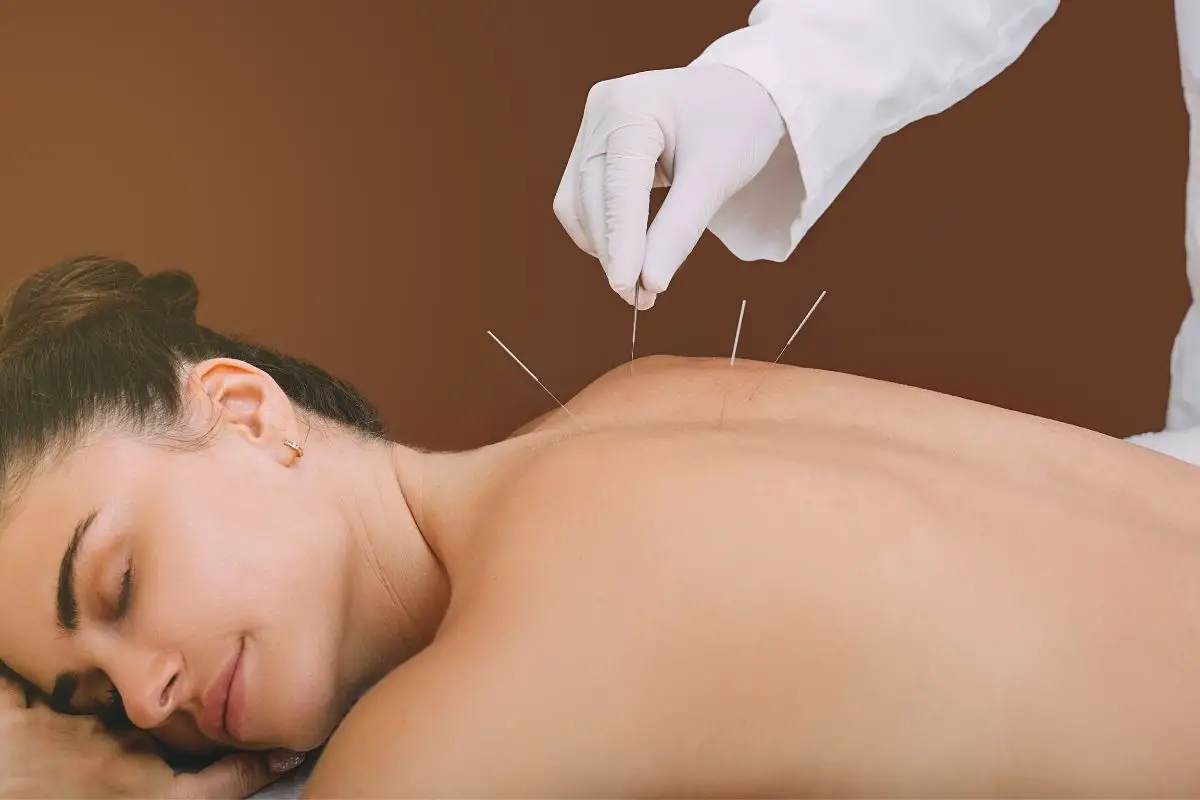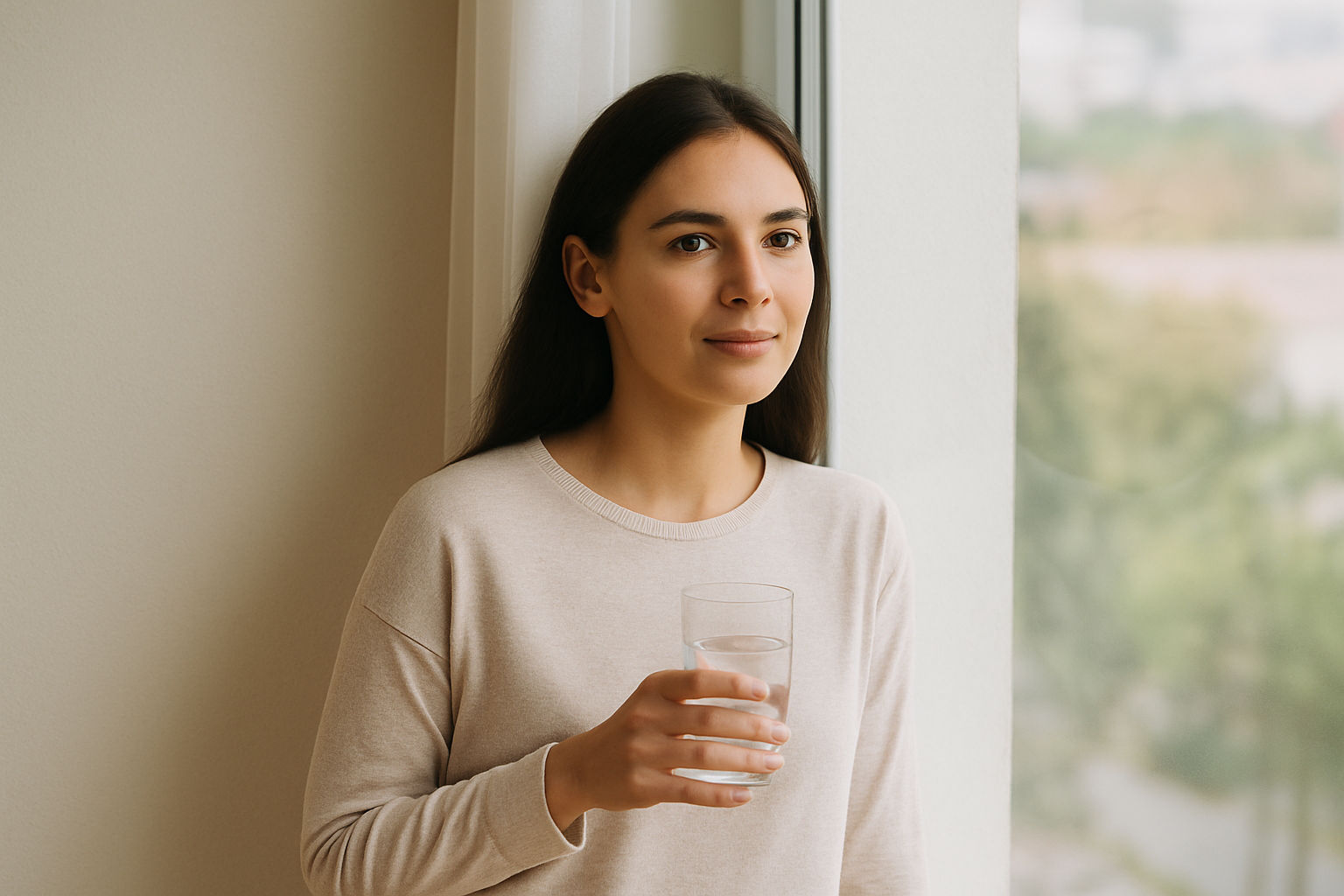Best Acupressure Points for Bladder Issues: Quick Relief for Office Workers
Bladder discomfort can be a common issue for many office workers due to long hours of sitting, which can result in pressure on the bladder and related muscles. Fortunately, Traditional Chinese Medicine (TCM) offers a variety of acupressure techniques that can provide relief. By stimulating specific bladder health acupressure points, you can support your bladder function and find quick relief from discomfort, all while seated at your desk or at home. We consulted Ms. Mai Sogawa, a TCM Therapist, to identify 15 acupressure points you can easily use at home to help alleviate bladder discomfort caused by prolonged sitting.
Acupressure Points to Improve Bladder Health
BL-64 (Jinggu)

Located just below the outer ankle, BL-64 is part of the bladder meridian and plays a crucial role in supporting bladder health. Stimulating this point helps to relieve bladder discomfort, promote urinary function, and reduce lower back tension, which often accompanies bladder issues in office workers.
- How to find it: On the outer side of your foot, below and slightly forward from the ankle bone.
- How to apply pressure: Use your thumb to press this point for 1–2 minutes, applying moderate pressure in circular motions.
BL-63 (Jinmen)
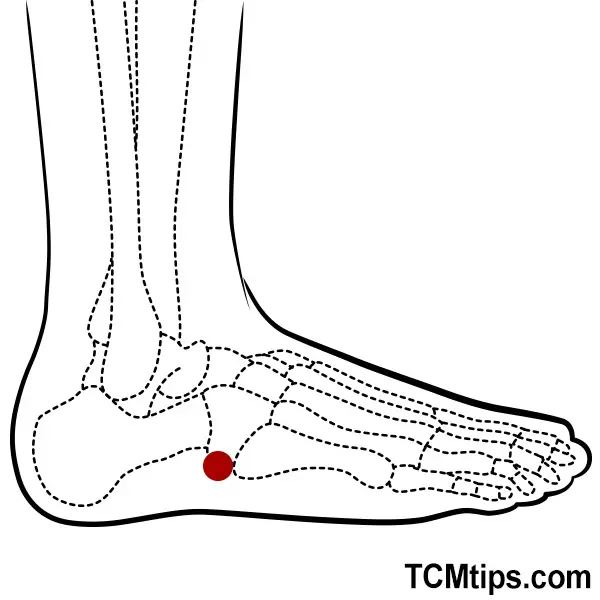
Situated below BL-64, this point helps in relieving acute bladder discomfort and can also help with lower back pain and urinary irregularities. It is particularly beneficial for those sitting for extended periods.
- How to find it: Near the outer side of your foot, about halfway between the heel and the pinky toe.
- How to apply pressure: Firmly press with your thumb or finger for 1 minute, taking deep breaths to maximize relaxation.
BL-23 (Shenshu)

This point is known to nourish the kidneys, which are closely related to bladder health in TCM. BL-23 also helps alleviate urinary discomfort and supports the function of the bladder, especially in cases of frequent urination or weakness.
- How to find it: On your lower back, about 1.5 inches from the spine, level with the second lumbar vertebra.
- How to apply pressure: Use your thumbs to massage this area gently for 2–3 minutes, focusing on a comfortable, soothing rhythm.
BL-28 (Pangguangshu)
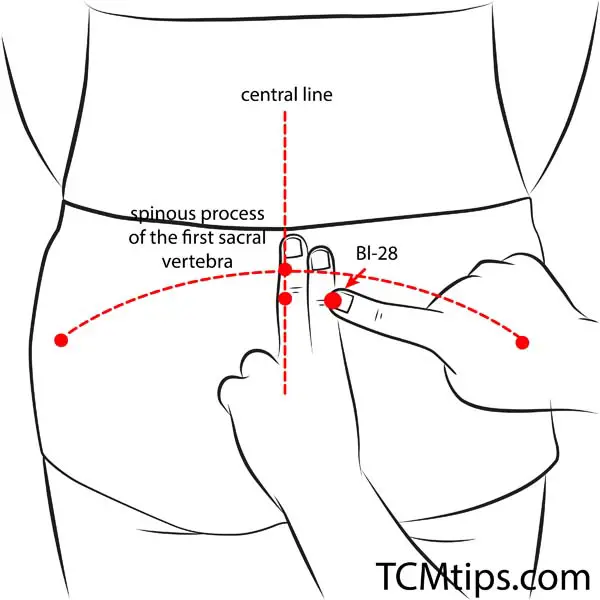
One of the primary points for bladder function, BL-28 is key in regulating bladder energy. It helps ease urinary retention, frequent urination, and lower abdominal pain.
- How to find it: On the lower back, approximately at the level of the sacrum, 1.5 inches from the midline.
- How to apply pressure: Apply firm pressure with your thumbs for 1–2 minutes, releasing tension and promoting relaxation in the pelvic area.
Ren-3 (Zhongji)

This acupressure point is located on the lower abdomen and is effective in treating bladder infections, incontinence, and urinary retention. It can be used to balance the flow of energy in the bladder.
- How to find it: 1 inch above the pubic bone, in the center of the lower abdomen.
- How to apply pressure: Use your fingers to press down for 1 minute, applying firm but gentle pressure in small, circular motions.
Ren-4 (Guanyuan)
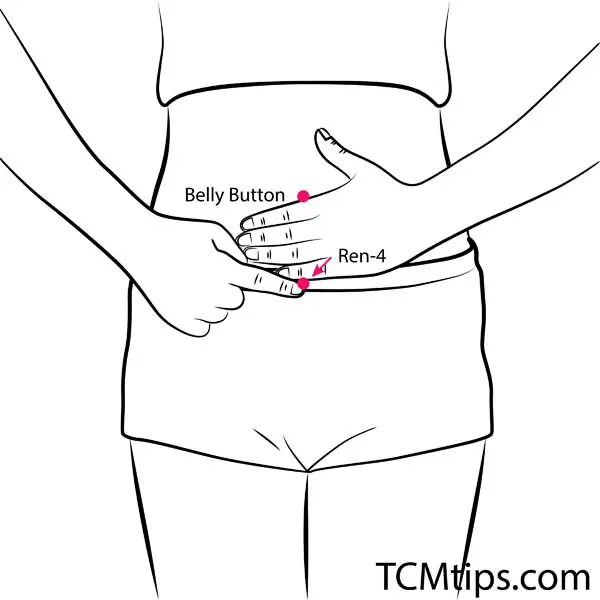
Ren-4 is another important point on the lower abdomen, often used to tonify the kidneys and bladder. This point is ideal for relieving chronic bladder discomfort and improving overall bladder health.
- How to find it: About 2 inches below the belly button, on the midline of the abdomen.
- How to apply pressure: Press gently with your fingertips, holding the pressure for about 2 minutes while taking slow, deep breaths.
KI-3 (Taixi)
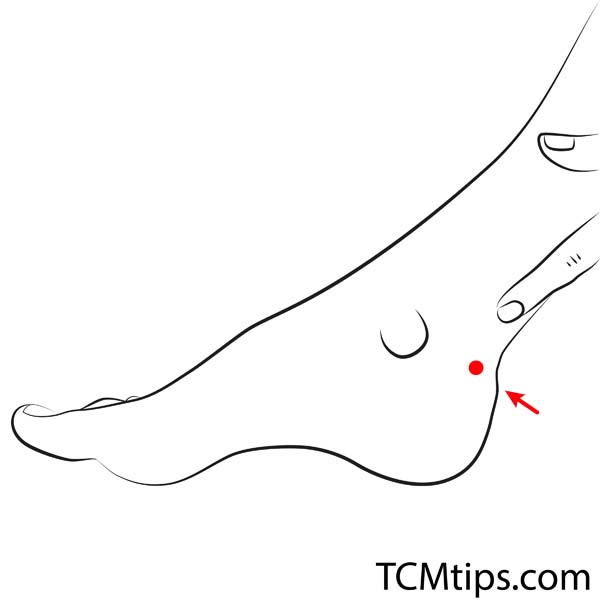
This kidney meridian point also influences bladder function. KI-3 is useful for treating urinary tract infections and bladder weakness, making it an essential point for office workers dealing with bladder discomfort.
- How to find it: Just behind the inner ankle bone, in the depression between the ankle and Achilles tendon.
- How to apply pressure: Firmly press this point for 1–2 minutes, alternating between circular motions and holding steady pressure.
KI-2 (Rangu)
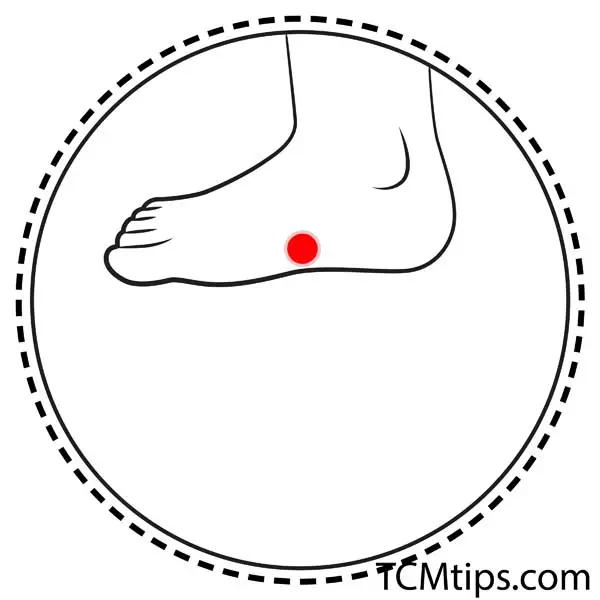
Another point along the kidney meridian, KI-2 helps regulate the lower body’s water metabolism, which can alleviate bladder problems such as frequent urination or burning sensations.
- How to find it: On the inside of the foot, below the big toe, just above the arch.
- How to apply pressure: Press this point with your thumb for about 1 minute, focusing on a steady, even pressure.
KD-5 (Shuiquan)

This acupressure point is beneficial for addressing urinary difficulties and enhancing bladder function. It helps to clear blockages that can cause discomfort.
- How to find it: Below the ankle bone, on the inner side of the foot.
- How to apply pressure: Press and hold for 1 minute, alternating between steady pressure and light tapping to stimulate the area.
BL-32 (Ciliao)

This point is located in the sacral region and is often used to relieve lower back pain and bladder discomfort. It is particularly effective for urinary incontinence and retention.
- How to find it: In the sacral area, near the second posterior sacral foramen.
- How to apply pressure: Use your thumb to press firmly for 1–2 minutes, focusing on relieving tension in the lower back and pelvic area.
BL-33 (Zhongliao)

BL-33 works similarly to BL-32 and helps alleviate bladder issues such as incontinence, retention, and urinary pain.
- How to find it: Near the third posterior sacral foramen, in the sacral region.
- How to apply pressure: Apply firm pressure for 1–2 minutes, breathing deeply to enhance relaxation.
BL-34 (Xialiao)

This point helps improve bladder control and relieves discomfort from bladder infections or frequent urination.
- How to find it: In the sacral region, near the fourth posterior sacral foramen.
- How to apply pressure: Massage this point gently for 1–2 minutes, focusing on reducing tension in the area.
BL-36 (Chengfu)
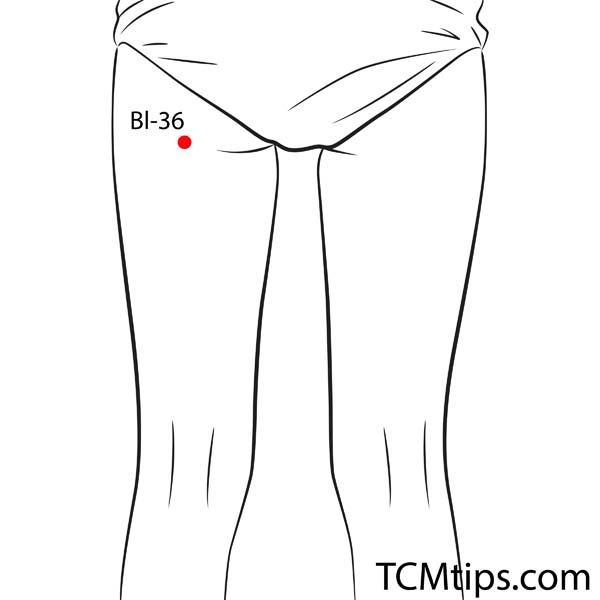
Located on the posterior thigh, this point is known to relieve lower back and bladder pain, helping ease discomfort caused by prolonged sitting.
- How to find it: In the middle of the gluteal fold (where the buttocks meet the thigh).
- How to apply pressure: Press firmly and massage for 1–2 minutes, focusing on reducing tightness in the muscles.
BL-52 (Zhishi)
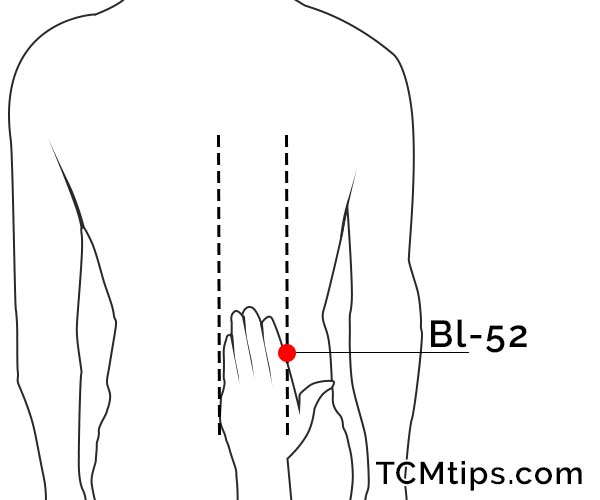
This point strengthens the kidneys and bladder, making it useful for chronic bladder conditions, particularly those linked to kidney weakness.
- How to find it: On your lower back, at waist level, directly in line with the small of your back (where you feel a natural curve). Locate your spine, then measure about two fingers’ width outward on either side to find this point.
- How to apply pressure: Use your thumbs to massage the point for 2 minutes, applying moderate pressure.
BL-54 (Zhibian)

This point helps ease bladder tension and is particularly helpful for those with urinary issues stemming from lower back pain.
- How to find it: At the back of the hip joint, near the upper border of the sacrum.
- How to apply pressure: Massage gently for 1–2 minutes to promote relaxation and ease any pain.
By incorporating these bladder health acupressure points into your routine, you can experience relief from bladder discomfort caused by sitting all day. For best results, try to apply pressure to these points regularly, especially if you spend long hours at a desk. Always take breaks, stretch, and practice mindfulness to further promote bladder health and overall well-being.

Try our Anti-Aging Gua Sha Tool designed to bring out your skin’s natural glow.
Best Gua Sha Product- Anti-Aging: The tool is designed to target 11 specific aging signs such as wrinkles and sagging skin. By following the 7-step routine, users can improve skin firmness and reduce fine lines naturally.
- Enhances Skincare Routine: It works effectively with serums and lotions, boosting absorption and efficacy of skincare products.
- Visible Skin Improvement: Users can expect a smoother complexion, reduced puffiness, and a more youthful appearance.
 P. Sze
P. Sze 


